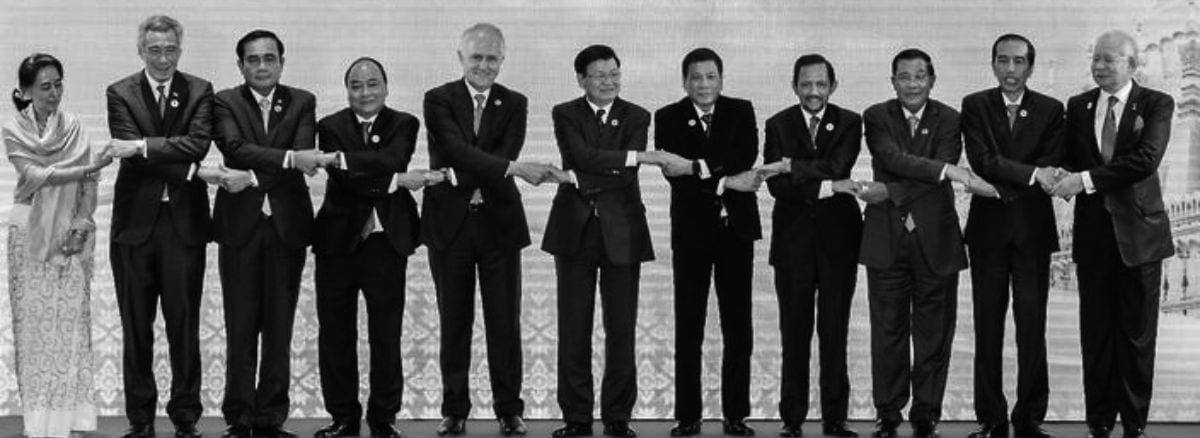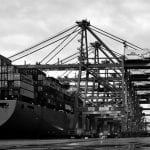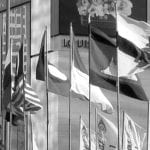The Future of ASEAN-Australian Relations

Shane Preuss, Research Intern at ASEAN Studies Center, Universitas Gadjah Mada
2016 was a significant year for Australian ASEAN relations. The First ASEAN-Australia Biennial Summit was held on 7 September 2016 in Vientiane, Lao PDR. At the Summit Australian Prime minister Malcolm Turnbull highlighted the importance of the Strategic Partnership between his country and the regional body, focussing on opportunities for economic partnerships and the common security challenge, “that demands a united response, terrorism.”
Beyond this, Australia also promoted its role as a peace broker as a non-claimant in the South China Sea. The Summit can be seen as a major success for Australian ASEAN diplomatic relations and Singapore Prime Minister Lee Hsien Loong offered a significant compliment, when he said Australia “understands” ASEAN and its developmental needs. The Summit closed with Turnbull proposing a special ASEAN-Australia Leaders’ Summit in 2018. This invitation was quickly followed by Queensland Premier Annastacia Palaszczuk’s offer to host the ASEAN leaders summit in 2018, which, if accepted, would be the first summit held outside of a current ASEAN member state.
These diplomatic developments reflect increasing inter-linkages between Australia and ASEAN on economic, cultural, academic and security fronts. These include the signing of the ASEAN-Australia-New Zealand Free Trade Area (AANZFTA) in 2009 and the development of Australia’s New Colombo Plan initiative to promote people-to-people exchanges by supporting Australian students to study and undertake work-based placements in ASEAN Member States. Participants of the ASEAN-Australia Summit also agreed to update the 2004 Joint Declaration for Cooperation to Combat International Terrorism. 2014 also saw the celebration of Australia’s 40th year as a Dialogue Partner of ASEAN.
These developments raise the question, what is Australia’s place in the region?
Australia in ‘Asia’
Historically ‘Australian’ identity has been defined in opposition to the idea of ‘Asia’. As part of the British Empire, Australia was understood as an outpost ‘confronting’ Asia. Following the decline of the British Empire this outpost mentality persisted and was reflected in former Prime Minister John Howard’s identification of Australia as a deputy sheriff to the US in Southeast Asia.
This identity stressed differences between Australia and ‘Asia’, conceived of as a coherent mass to the countries north, and was represented through racial identifiers, such as the ‘White Australia policy’, and ideological or cultural identifiers such as Howard’s championing of the shared values and common interests’ that bind the US and Australia together.
Culturally and politically, Australia has been tied to the Anglo sphere, while the country’s security policy has remained one of dependence, first on the UK and then on the USA.
Despite this, however, Australia finds itself drawn into its surrounding geo-graphical and geo-political region. Not only have Australian economic interests become increasingly embedded within the region, the country’s significant strategic and security objectives are also tied to its relationship with South East Asian partners.
ASEAN and Australia: Competing visions of Regionalism?
ASEAN has positioned itself as the driver of East Asia regionalism. The Organization’s convening power and centrality to regional processes is reflected in forums, such as ASEAN + three, East Asia Forum and the ASEAN Forum, which brings together a number of states well beyond the core 10 members, to shape the evolving political, strategic and economic architecture of the region.
ASEAN has also shown a propensity for expansion. The initial five members has expanded to the present 10, while observer status is held by Papua New Guinea (since 1976) and Timor Leste (2002). Fiji’s request for observer status also received support from former Indonesian President Susilo Bambang Yudhoyono and Bangladesh has received support from Laos.
Australia’s reorientation towards Asia-Pacific was, perhaps, first evidenced, when Australia became ASEANs first dialogue partner 1974. Since then Australia has been invited to attend and participate at the East Asia Summit, the ASEAN Regional Forum and the ASEAN Defence Ministers’ Meeting Plus (ADMM+).
As Australia engages with the region, however, it does so from a liminal position between the ‘West’ and ‘Asia.’ Australia has displayed an ambivalent position toward South East Asian Regionalism and ‘Asian’ regional identity and ASEAN states have reciprocated this ambivalence regarding Australia place within the region.
Former Malaysian Premier Abdullah Badawi expressed Australia’s outsider status at the first East Asia Summit when he remarked that Australia and New Zealand would be second-class participants in Asia’s vision, with “ASEAN+3” to be the “driver” of integration. Badawi commented that Australia’s participation at the Summit represented a convergence of “common interests’ rather than “being members of the community.”
Regarding a potential Australia application for ASEAN membership, Rodolfo Severino, a Philippines diplomat and Secretary General of ASEAN from 1998 to 2002, remarked that ASEAN’s likely response would be “You’re not Southeast Asian.”
Australia’s ambivalent, or marginal position toward and in ‘Asian’ regionalism has led to the development of different, perhaps competing, visions of regional architecture. Australia’s involvement in establishing APEC, which would come to include the US, can be seen as an attempt to dilute growth of East Asia regionalism. Former Prime Minister Kevin Rudd also made a proposal for the creation of Asia Pacific Community by 2020, which would include US, New Zealand, China and India focused on security and trade. The proposal was met with little enthusiasm, particularly from ASEAN members, and was criticized as unnecessarily multiplying regional institutions.
Ongoing debates in Australia have also seen a shift from defining the countries region as the ‘Asia Pacific’, to the ‘Indo Pacific,’ which may or may not include China, and even Africa, depending on ones viewpoint. In 2014, during a speech about Australia’s “new aid paradigm” Foreign Minister, Julie Bishop, stated that Australia’s principal focus for aid allocations, would be in Australia’s region – ‘the Indian Ocean Asia Pacific.’ The Indo-Pacific has also become the defining geographic expression for Australia’s defence strategy, first articulated in the Labour Party’s 2013 Defence White paper and later embraced by the Coalition government.
The Future of Australian-ASEAN Relations
How can the recent developments in Australia-ASEAN relations be interpreted against this backdrop? Is it evidence of deepening integration, or the development of a shared community? Or are ASEAN Australia relations still mediated, purely, by a paradigm of shared interests. Is it a sign of convergence between how Australia and ASEAN understand their region, or will they continue to have different, perhaps competing, visions of regionalism?
Severino, points to Australia’s continuing ambivalence as its biggest hurdle to the integration into ASEAN. Regarding elevation to observer status he argues,
‘The problem with Australia is its ambivalence. At some point when Australia feels confident enough to say, “We are in Southeast Asia and we deserve to be in ASEAN,” then that will be the time. But this has to be worked out internally, domestically.’
However, by defining its region as the ‘Indo-Pacific,’ it can be argued that Australia is not attempting to integrate itself within the ASEAN community. The expansive definition is an acknowledgment, not only of Australia’s many geographical and strategic connections, or its maritime outlook, but also of the persistence of its ambivalent character as an island nation with no firm attachments, or connections with the countries that surround it. Australia’s region is defined by partnerships, even friendships, strengthened through social and cultural outreach. It is not, however, defined by a community. Within Australia’s new, and expansive understanding of its region, ASEAN is part of a broader picture, one partner among many.



